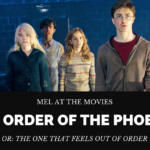
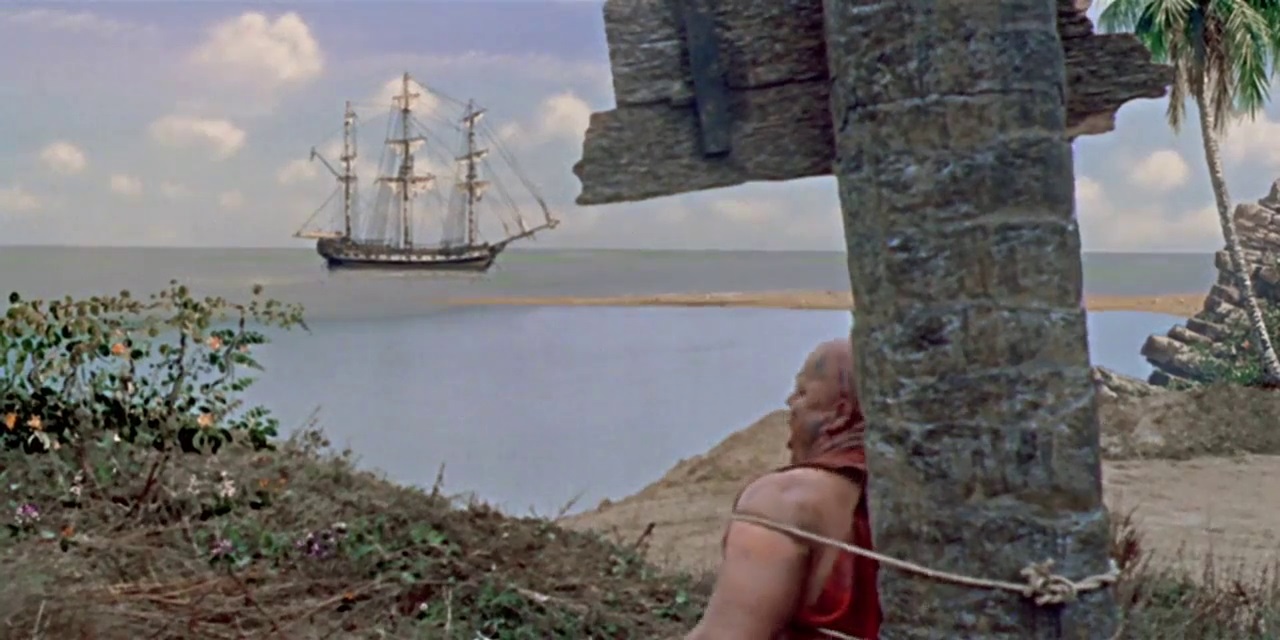
The first thing that comes to mind when people think “Hammer” is usually “Horror”.
Well, the first thing is usually “nail” or “MC”, but I mean horror movie people, not people people.
But Hammer Films wasn’t always the home of horror. The studio started out with comedies and crime capers. There was even a series of spy films produced in the 1940’s and 1950’s about Dick Barton: Special Agent. They steadily produced mostly unremarkable support films, movies which would play well in a double feature.
For a while Hammer’s bread and butter was ‘quota quickies”, films produced to meet an act of Parliament which required British cinemas to show a certain number of British made films. What was originally supposed to stimulate the British film industry generally just ended up producing works of questionable quality.
A producer of many of these and other films for Hammer Film Productions was Anthony Hinds, the son of Hammer co-founder William Hinds. It was arguably Anthony who lit the fire that would cause Hammer to burn bright in the public consciousness. He was the one who was so passionate about the BBC miniseries The Quatermass Experiment that he purchased the film rights and produced a version for the big screen. The success of that film, as I’ll mention below, is what truly set Hammer on its path to international acclaim and it was a science fiction tale.
The final film I talk about, a remake of Alfred Hitchcock’s The Lady Vanishes, would be Hammer’s final movie production for a while. The studio tried its hand at television production — in a great example of “if you can’t beat them, join them” — and created a couple of anthology series. Both Hammer House of Horrors and Hammer House of Mystery and Suspense are like any anthology series, a mixed bag, but they’re worth checking out for the gems.
Like the studio’s most popular monsters, Hammer wouldn’t stay dead forever. But we’ll save that for the final article.
What I’d like to highlight are a few non-horror, or only partially-horror, films that Hammer produced during its rise and eventual fall. Some of them stay fairly close to the Hammer Horror formula while others stray wildly. They all manage to show off the benefits — and a few, the downsides — of Hammer’s style and in turn the reason for the studio’s legacy.
The Quatermass Xperiment (1955)
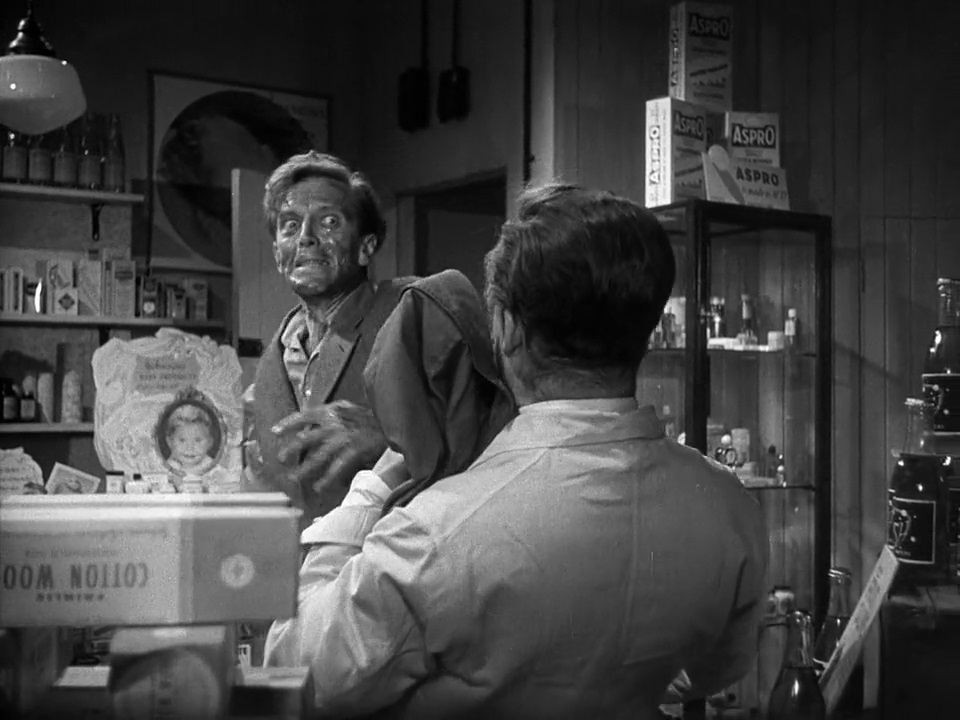
In the words of Hammer producer and director Michael Carreras:
The film that must take all the credit for the whole Hammer series of horror films was really The Quatermass Xperiment
Bernard Quatermass is a creation of Nigel Kneale, a popular British screenwriter. His serial, The Quatermass Experiment was a huge success and Hammer jumped on the chance to adapt it. While Kneale wasn’t happy with some of the changes to the story and some of the casting, the film version is a marvel.
The Quatermass Xperiment — the title was changed to take advantage of the fairly new X-rating — is the story of a space mission gone wrong. When the rocket returns to Earth there’s only one surviving crew member and something about him is off. The designer of the rocket is Bernard Quatermass, portrayed by Brian Donlevy, is a brusque and commanding scientist. Apparently Donlevy’s casting and portrayal was a major sore spot for Kneale. I can understand that, but I enjoyed his hardheaded portrayal. The performance plays especially well when you consider it after watching the next two films in the series. The character evolves and this is a perfectly good place for it to start.
The other major and much less controversial performance is by Richard Wordsworth as the sole surviving crew member on the rocket, Victor Carroon. Wordsworth’s wide-eyed, emaciated face sells the horrors of the beyond more than any other “space travel gone awry” story has before or since. He manages to be heartbreaking in a wordless performance and his slow transformation is hard to watch
What truly sells the film, and explains why it was a big success, is the direction by Hammer regular Val Guest. Guest’s black and white photography is gorgeous, shooting the whole thing in a truthful, almost news report style. It sells the urgency of the unknown and the horror of the story really well.
The climax to The Quatermass Xperiment is one of my favourite sequences from any sci-fi film. The unrecognizably mutated Carroon, now a tentacled mass, has made its way to Westminster Abbey. A BBC film crew is shooting something at the location and there’s a fantastic pan up to the creature on some scaffolding that’s both dynamic and shocking.
The Quatermass Xperiment was a huge success. Despite the gripes from Kneale — particularly Quatermass becoming American and the less wordy, more bombastic finale — it’s an amazing picture and one the finest examples of early science fiction. There’s a very good reason it had such a wide-reaching influence and allowed Hammer to break out of its early mold and take more chances on science fiction and horror films.
Quatermass II AKA Enemy from Space (1957)
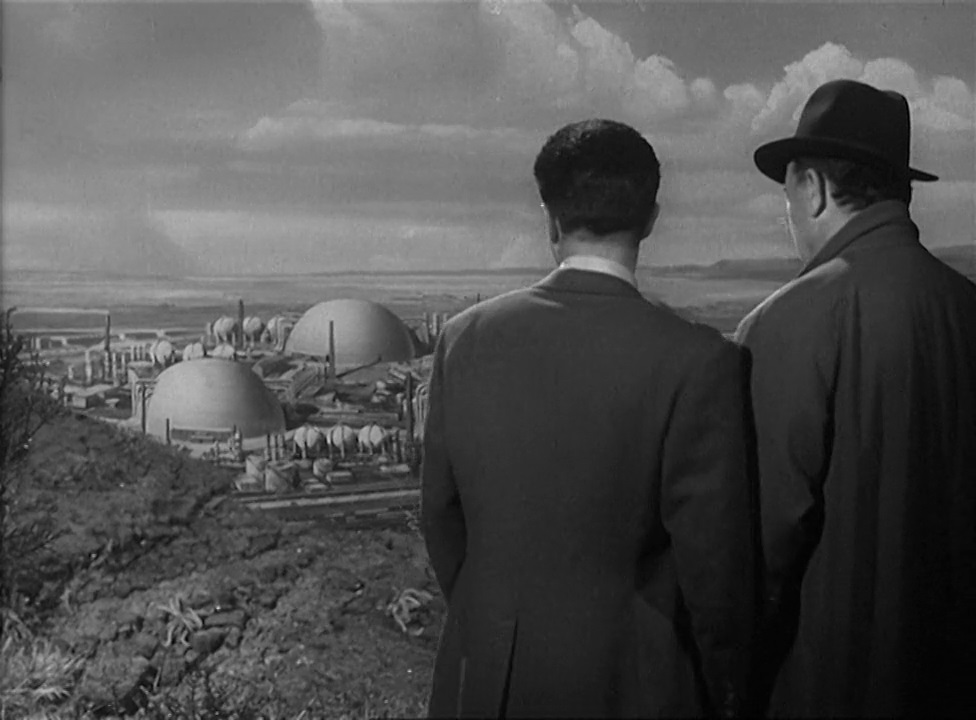
After the critical and commercial success of the first film there were immediate plans made to adapt the sequel series, Quatermass II. Due to Nigel Kneale’s issues with the first film adaptation, and the lack of money he received for it from the BBC, Kneale demanded to be involved in the second. He condensed the series into a screenplay and I think Kneale’s input was crucial in creating a bigger and better film.
Brian Donlevy returned to the lead role as Bernard Quatermass. This version of the character doesn’t seem as hard-headed and singular in his scientific quests. If there’s only a rough story continuity between films there’s certainly a solid character continuity. While Donlevy’s still a rough, no-nonsense type of guy, there’s a new softness to how the character is written. He seems to be more mindful of humanity and has less of a “needs of the many” outlook on science. It’s a nice, subtle difference and while I go back and forth on whether I prefer The Quatermass Xperiment or Quatermass II there’s no doubt in my mind that this is the best of the Donlevy performances.
The story is a big step up from the first film, in both scope and scale. Quatermass’s rocket group is working on a very ‘50s moonbase project. When what appears to be meteorites start falling out of the sky and emitting harmful — and mind-altering — gases Quatermass investigates. He uncovers a replica of his moonbase plans, brainwashed armed guards, an ominous asteroid and, ultimately, 100 foot tall alien creatures.
Like I said, it’s a big step up from the first.
The best part about the film is that all of this follows naturally. We’re thrown into the action immediately when Quatermass comes upon a couple who came into contact with a fallen asteroid and things just build at a steady pace from there. I attribute a lot of that to Val Guest, who directed again, as well as Kneale’s run at the script. There’s a certain elegance in the build-up that shows it’s from someone with an intimate understanding of the original series.
The effects work and production design are fantastic too. The industrial layout of the moonbase is ominous, especially when it’s guarded by machine-gun-toting, gas-mask-wearing, jack-booted thugs. The creature effects in the finale are also startling and never feel too gimmicky or too much like a miniature.
Quatermass II was a commercial success. The only real failing was that it happened to come out in the same year as the runaway hit, The Curse of Frankenstein. Hammer turned their focus to gothic horror and away from their first successful series.
For a little while, anyway.
Quatermass and the Pit AKA Five Million Years to Earth (1967)

Hammer returned to Quatermass over a decade after the first film’s huge success. There are some marked differences between Quatermass and the Pit and the first two films in the series. Most of those differences actually benefit the work.
Quatermass’s rocket group has been relegated to become a military project run by Julian Glover’s Colonel Breen. Meanwhile, construction in the London Underground uncovers ancient skeletons and a type of ship made out of some unknown metal which has apparently been buried for millions of years. Eventually these lead to the discovery of a long-dead Martian society and a possible theory regarding the beginnings of life on Earth.
The evolution of Bernard Quatermass is the most important aspect of the film for me. In the ten years that have passed since last we saw him the character has become older, kinder and British again. He’s shrugged off his gruff Americanness. Obviously that last part is due to Andrew Keir replacing Brian Donlevy in the role, but thematically it works perfectly. Quatermass needs to be a softer intelligence in this film. The character is going up against not only military overstep but his own mortality in the form of “demons” and “Satan” himself. There’s a lot of religious allegory in this film, starting with the implications of the title itself, and Quatermass at an advanced age is the perfect vessel in which to explore that. It’s always fun to have a man of science face the ultimate unknown and see what transpires.
Keir is great in the role and it took watching this film to fully understand Kneale’s complaints about the character in the first two films. I still enjoy Donlevy’s performance, and I think it works especially well in tandem with Keir’s, but Keir brings out a different facet to Quatermass’s character that I never knew could be there. Keir isn’t alone though, Glover is solid but underwritten as the antagonist. James Donald played Doctor Roney (the San Francisco treat) and Hammer go-to girl, Barbara Shelley payed Barbara Judd.
Roy Ward Baker, a Hammer regular, took over directing duties from Val Guest and does an admirable job. It’s odd seeing the world of Quatermass in colour. It’s such a ‘50s, black and white type of tale that it’s a little jarring at first. But the staging and production design being top-notch, with the London Underground set in particular being quite memorable.
Like the previous two films, Quatermass and the Pit has a lot to chew on thematically and philosophically. It may even have the most profound themes thematically. It falls short of the first two in quality, but just barely.Pit is still a great picture and a great theatrical send-off to one of the best science fiction characters of all time.
The Hound of the Baskervilles (1959)
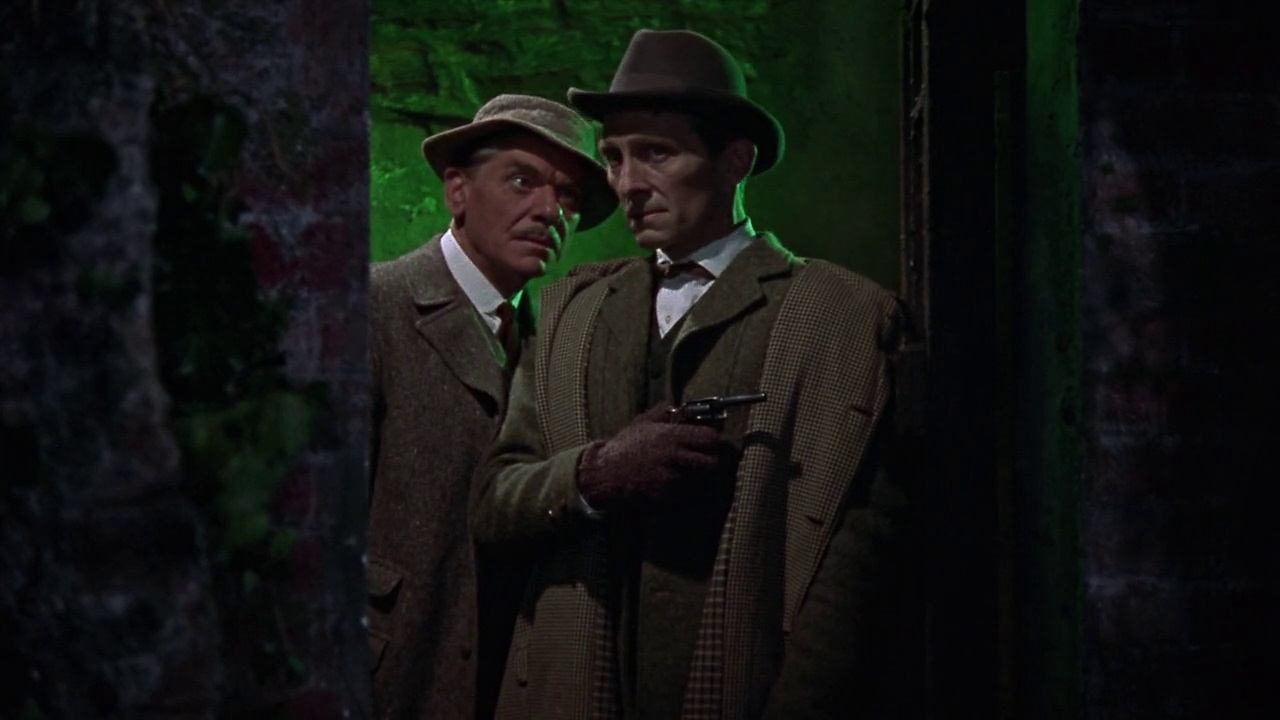
Easily the movie in this article which most resembles the classic Hammer gothic horror, The Hound of the Baskervilles is a fantastic film. It may even be my favourite Sherlock Holmes adaptation. It helps that the proceedings are led by Christopher Lee as Sir Henry Baskerville and Peter Cushing as Sherlock Holmes himself.
Cushing is obviously perfectly cast as Holmes. He’s my favourite flavour of Cushing in this film: well-meaning prick. Cushing himself was a gigantic Holmes fan and loved being able to portray him on film. He’d play the role again in 13 episodes of a television series but was allegedly unhappy with the performance. I’ve never seen it, but if he was measuring his performance in that against what he did in The Hound of the Baskervilles I can see how it would be hard to compare.
The Hound of the Baskervilles has some of the best production design in any Hammer film. There’s the requisite country mansion, but we also get a swamp, an abandoned mine, a farmhouse and others. The whole thing feels bigger in scope than we’re used to from this kind of production. It also helps that it’s shot by Hammer mainstay Terence Fisher, competing the Lee, Cushing and Fisher dream team.
Lee’s performance in this film is further proof to what I was saying in the previous article regarding the Bland Leading Man archetype. Like Cushing in The Mummy, Lee is given a pretty standard role to play. Sir Henry Baskerville doesn’t have much of a personality on the page. But put an actor of Lee’s calibre in the role and he imbues it with life. The only excuse for a Bland Leading Man is uncreative casting. Speaking of casting, André Morell as Doctor Watson is almost as perfect as Cushing. Hound has always been a story showcase for Watson, what with Holmes being out of the picture for a large chunk of it, and it’s nice having a smart, capable Watson to lead us through. You can definitely see why these two would be friends.
Hammer amps up the action from the original story, adding a run-in with a tarantula early on and a mineshaft collapse a little later. While both are probably unnecessary they’re nicely staged and well-performed. By the time the finale rolls around I’m sad that I have to say goodbye to this incarnation of Holmes and Watson. I wish Hammer had produced a whole series of Holmes adaptations starring these guys.
But that didn’t happen. Luckily we’re still left with arguably the greatest film adaptation of Sherlock Holmes to-date.
Captain Clegg AKA Night Creatures (1962)
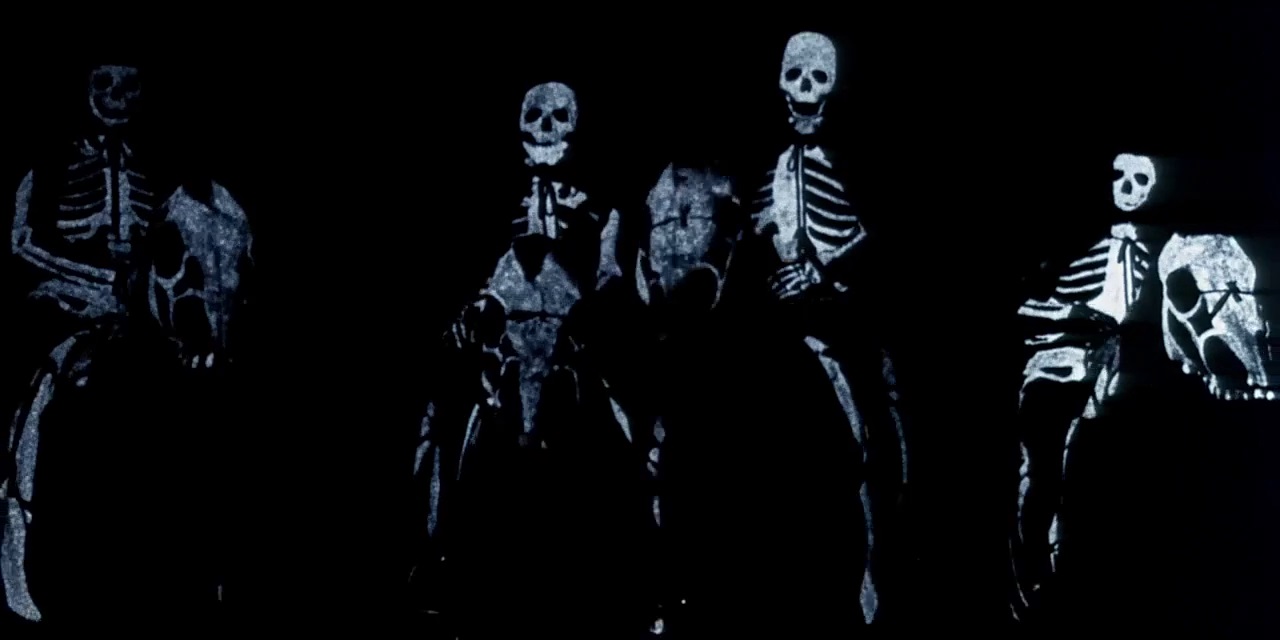
Captain Clegg is an odd and interesting movie structurally when you compare it to other films in Hammer’s output, specifically their horror canon. It’s almost laid out in reverse from what you’d traditionally expect. All of the thrills and effects are front-loaded and the drama carries the rest of the film through to the climax. It’s an interesting reversal and actually a nice change of pace when you’ve watched as many Hammer films in a row as I have. How well it plays outside of that context, I’m not sure.
The story is an adaptation of the Doctor Syn novels and fairly straightforward. An island off the coast of France is the final resting place of the infamous Captain Clegg and its current residents maintain a smuggling operation. A group of sailors show up from the mainland to investigate the reports of smuggling and also look into the “night creatures” that are apparently terrorizing people near the swamp.
The movie has a playfulness that works really well. I enjoyed practically the whole town being in on the smuggling operation and working to undermine the French sailors. Even the creepy imagery of a “scarecrow” in a field being used to keep an eye on the sailors’ movements seems sort of fun. There’s also a very sweet surprise wedding that comes later in the film. These are tones that I don’t usually expect from a Hammer film that caught me off-guard. Luckily, it worked well.
The cast is loaded with Hammer regulars. Yvonne Romain and Oliver Reed, both from The Curse of the Werewolf, play a young couple on the island. Michael Ripped, normally a small side character in Hammer productions, gets a beefed up role as the island’s undertaker. And, of course, there’s the inimitable Peter Cushing as the island’s Parson and head of the smuggling operation. In 1962 Hammer had films like these down to a science. There are action beats (gamely performed by Cushing, as always), a few mild scares and a lot of character interactions in and around a tavern. Fitting for the island setting the production is amped up, truly making the island feel like a lived-in place.
The oddball structure of the film — it is mainly an epilogue to a pirate story after all — may not work for some, but I enjoyed it. The only downside is the abrupt, oddly moralizing ending to the film. While it’s nice to see Michael Ripper take out one of the antagonists of the film (the problematically named “Mulatto”) it ends up feeling like there’s a beat missing somewhere.
Overall it’s a fun drama with a hint of the Hammer horror flare, and who could pass up the opportunity for more of that?
One Million Years B.C. (1966)
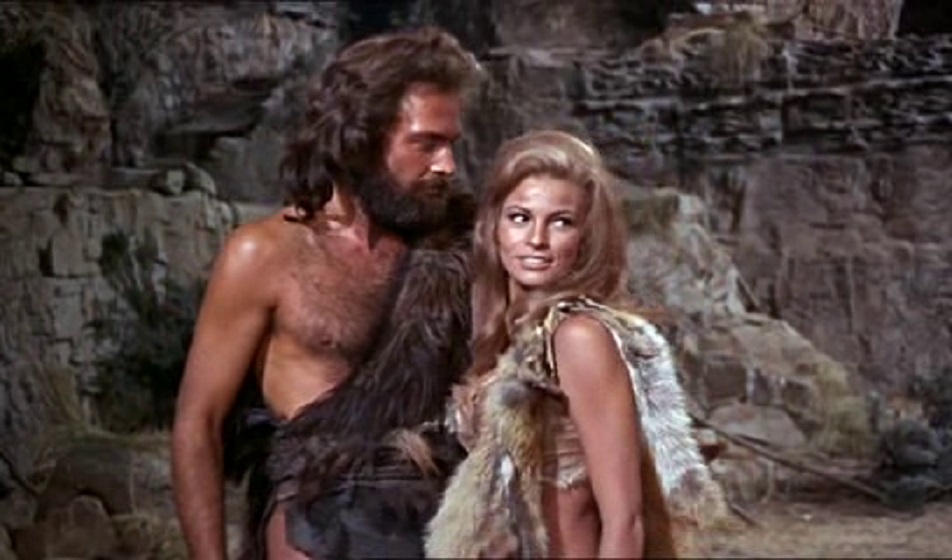
A lot of people will tell you there’s only one reason to watch One Million Years B.C. and that’s the fact that Raquel Welch wears a fur bikini throughout. They’re wrong. Because I’m a film nerd, the one true reason to watch One Million Years B.C. is Ray Harryhausen’s fantastic stop motion special effects.
Unfortunately, there’s not a whole lot beyond that to recommend about the film.
Obviously a caveman picture has to generally be seen as fantasy or science fiction. Anyone who makes a film like that wants to have the cavemen fight dinosaurs. It’s a pretty natural inclination. It’s also inherently silly, so it’s a pretty big mental hurdle you have to jump to enjoy it.
Our hero, John Richardson’s Tumak, having been banished from his tribe, is confronted by a giant iguana. It’s silly and looks bad and would normally be an omen for some awful things to come. But surprisingly the effects get better and better as the film goes on. There’s a gigantic tarantula that shows up as well, but once the film goes with stop motion effects the composite work seems to get better. Oddly the giant, lumbering sea turtle creature fits in with the real actors much better than the living, breathing iguana. A lot of that is attributable to Ray Harryhausen, the effects legend who did all the creature work in the film. Even though a lot of it is two plasticine dinosaurs fighting each other and being matted into a shot it comes off as immersive thanks to the fine effects work.
The story itself is simple and straightforward. Tumak comes across a fair-haired tribe and Raquel Welch’s iconic Loana, who helps him return to his tribe. There’s basically a lot of walking and a little bit of character work between big special effect pieces and then the film is over. It’s understandable why it was a hit at the time. It must have been amazing to see on the big screen. But without that sense of wonder you’re left with just the story and the, admittedly impressive, production design.
An underrated element of the film itself is Welch’s performance. More than just a sex symbol and a plot device in The Shawshank Redemption, Welch is very good in a mostly silent role. She comes off as the best of the lot, showing both strength, vulnerability and goodness through not much more than a smile or a flit of the eyes. She even manages to wring some true pathos from a pretty silly climactic catfight in a cave. She’s a great talent who shouldn’t be underappreciated.
Paranoiac (1963)

Paranoiac is one of several thrillers produced by Hammer films throughout their run. Meant to capture the feeling of Alfred Hitchcock’s 1960 hit Psycho, Paranoiac is a worthy entry as far as coattail-riders go. The movie is written by Hammer regular Jimmy Sangster and directed by Hammer regular Freddie Francis. With Francis behind the camera it’s no surprise that the film’s black and white photography is as good looking as it is. And Sangster’s script has the right amount of thriller intrigue with just a drop of Hammer horror style.
The Ashby family is a pretty messed up one. The parents died when the children were young, the oldest son committed suicide, the surviving son turned into an alcoholic douchebag and the daughter was left in a fragile mental state. Just prior to the Ashby trust being turned over to Simon, the surviving brother, a man shows up claiming to be the oldest son, alive and well.
Oliver Reed’s performance as Simon is the true standout in the film. He’s clearly having fun playing the cruel, caddish aspects of the character while also stretching himself to wide-eyed paranoia. Reed is pretty mesmerizing on-screen. Even when he’s throwing a tantrum towards a servant, mentally torturing his sister or starting a drunken fight at a bar, you still want to watch more.
The rest of the cast does well. Alexander Davion as the returned brother is bland but serviceable. Janette Scott as Simon’s sister, Eleanor, is good but is sadly given little to do except be helpless or manic. That’s one of my only issues with the film. A lot of it is portrayed through Simon’s perspective, which is understandable, and the returned Tony. While Eleanor’s feelings about her brother seemingly coming back to life and her own fragile mental health are fairly large aspects of the story very little of it is seen through her perspective. It’s a standard problem with Hammer films, the lack of agency in its female characters. It’s especially disappointing in a Hitchcock riff when films like Psycho had two examples of well-written, proactive women in Janet Leigh and Vera Miles.
Aside from that there are a few bumps along the way. There’s a masked figure that, while legitimately creepy, is pretty ancillary and clearly only added for a quick scare. There’s also a couple big exposition dumps later on that are too long and probably too late, coming well after the audience has already figured out the “twist”.
Still, this is one of the best of Hitchcock-lite films. It doesn’t reinvent the psychological thriller, but it lays out an entertaining and intriguing story. Cap that off with a fantastic performance from Reed and the movie becomes a must-watch.
Fanatic AKA Die! Die! My Darling! (1965)
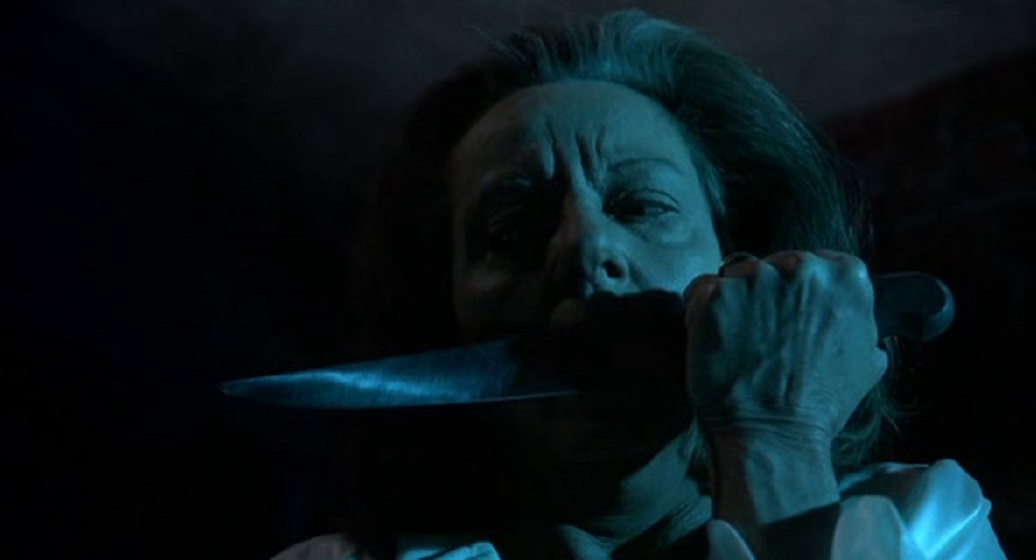
Fanatic is such an odd mish-mish of styles that it ends up being much less than the sum of its parts. There’s a light, playfulness to the score and a lot of the character interactions which clashes harshly with the premise of a religious zealot holding a woman against her will. The two tones never mesh well or even juxtapose each other in an interesting way. It’s also another Hitchcock-lite without having much tension and also seems to have a bit of a giallo flare in certain scenes that stands out and never pays off.
Stefanie Powers is Patricia, a woman returning to London to get married. Prior to that she feels the need to visit her former, deceased, fiance’s mother, Mrs. Trefoille. Trefoille is played by Tallulah Bankhead and is the primary reason to watch the film. Her turn as the titular fanatic is engrossing and surprisingly believable. While you want to scream at Patricia for staying around too long as Trefoille continuously shows how troubled she is, you can still sympathize with Trefoille as a mother who lost her son and then lost her mind in religion. That’s all thanks to Bankhead’s dramatic yet sensitive portrayal.
Unfortunately the rest of the film doesn’t live up to her. By the time Patricia is being held against her will the film has already settled into a meandering pace and a whimsical tone. There are horrifying scenes of Patricia being preached at and denied food that are undercut by the goofy score.There’s also the performance of Peter Vaughan as Harry, one of Trefoille’s servants and complicit in Patricia’s captivity. Vaughan’s wide-eyed, lecherous performance is pitched way too broad and silly, and that’s even comparing him against Donald Sutherland in an early role as the mentally challenged gardener.
By the time the finale comes around the film can’t really work up enough effort to be thrilling. A few escape attempts by Patricia have the same low-stakes energy, except for an actual moment of tension when she tries to have Sutherland’s character mail a postcard for her.
Fanatic is unfortunately skippable. Powers and Bankhead put in solid performances, and the story could have been intriguing in better hands, but the whole thing is sunk by a wonky tone.
The Lady Vanishes (1979)
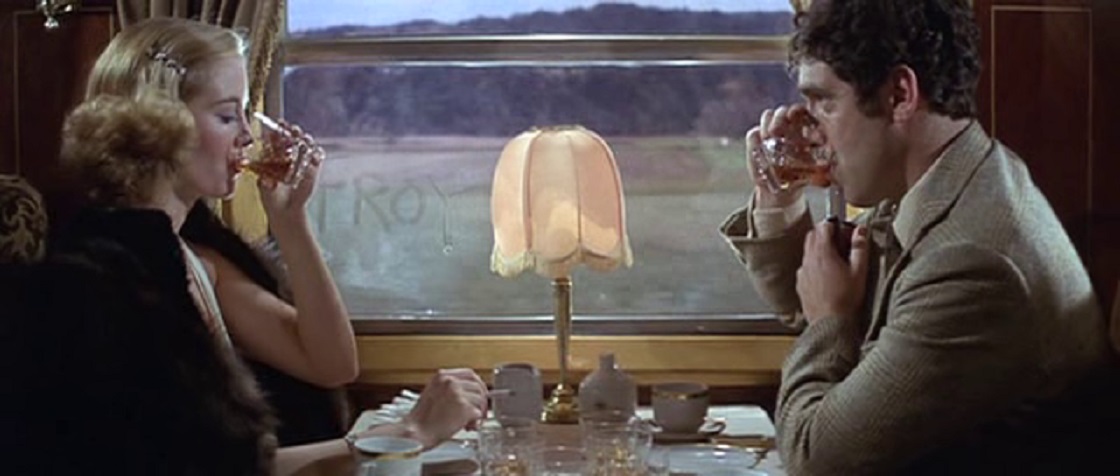
As a way for Hammer to go out, The Lady Vanishes is definitely more whimper than bang. It was the final film produced by Hammer Film Productions for over three decades. It’s unfortunate that the film happened to be a serviceable but subpar remake.
There are definitely enough good things in the film to make it an enjoyable experience. The story is hard to beat in its simplicity and baked-in intrigue. The cast is also a plus, with Herbert Lom as a German doctor, Elliott Gould as a photographer, Cybil Shepherd as an heiress and Angela Lansbury as Miss Froy, the titular Lady.
Gould and Shepherd are usually very watchable actors, the only problem is their energies don’t work well together in this movie. Both of their performances are high energy and excitable, especially once the mystery is solved, and it becomes too much when they’re bouncing off each other. They do much better playing against the supporting cast, like Lansbury or Lom. However, the real standouts in the cast are Arthur Lowe and Ian Carmichael as Charters and Caldicott, two cricket obsessed Englishmen. Those characters were so likeable in the 1938 original that they showed up in three other films.
The film has enough momentum, thanks to the inherently interesting concept and the pressure cooker aspect of most train films, but the miscast leads make a lot of the scenes a chore to sit through. It’s not a terrible movie but there are high expectations when you’re remaking a classic, and when you’re the seemingly final feature film of a popular production company those expectations soar even higher. The Lady Vanishes, sadly, can’t quite reach those heights.
One Million Films to See
Not really a million, but still.
There are other classic Hammer movies that are worth checking out which I haven’t had a chance to discuss. There’s really something for everyone if you truly look. There are more Hitchcock-lite films like Maniac, Nightmare and Hysteria. There are adventure films like Terror of the Tongs and The Pirates of Blood River. There are also other science fiction films like X the Unknown, The Damned and The Lost Continent.
Stretching outside of Hammer there’s the classic Alfred Hitchcock films that fall neatly in the psychological thriller genre. Psycho is obviously a masterpiece, with every element working perfectly in tandem to create a thriller that resonates to this day. It was also shot in a very Hammer style, using the crew from the television series Alfred Hitchcock Presents in order to keep the film within a tight budget. The original The Lady Vanishes from 1938 is also worth seeking out. It holds up well and the direction from Hitchcock is hard to top. A later movie worth watching in Hitchcock’s filmography, one that’s well-regarded but I still consider underrated, is 1972’s Frenzy. Frenzy brings Hitchcock home to Britain and is much more explicitly lurid and nasty than we’re used to seeing from him. There’s still the incomparable amount of tension Hitchcock is able to ratchet up, but with a very British type of sleaze that’s also on display in a lot of Hammer films.
Bringing it back to the beginning, with Quatermass, most of the television versions of the films are worth checking out. I’ve only seen a couple of the miniseries and the 2005 live staging of The Quatermass Experiment but the critical reception for most Quatermass tales have been stellar. Beyond that specifically, the 50’s was teeming with great, thought-provoking science fiction. Check out The Thing from Another World, Invasion of the Body Snatchers, The Day the Earth Stood Still or any number of way more obscure options. It really was a fantastic time period for sci-fi, with technology both growing exponentially and being in its relative infancy, the amount of story possibilities were endless.
Coming Up in Part 5 . . .
The final installment of The History of Hammer Horror will deal with the continued influence and legacy of Hammer as well as the company’s rise from the dead.
In Case You Missed It . . .

